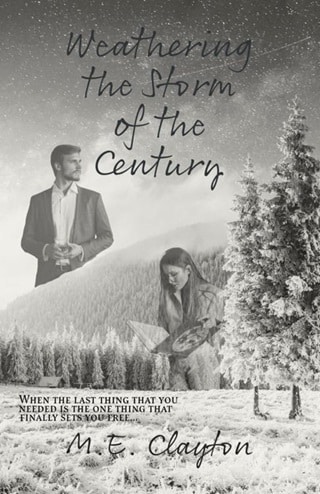Chapter 27: Feyre
CHAPTER
27
Feyre
The city bells chimed eleven in the morning.
A month later, Ressina and I stood near the front door, both of us in nearly identical clothes: thick, long sweaters, warm leggings, and sturdy, shearling-lined work boots.
Boots that were already splattered with paint.
In the weeks since Polina’s family had gifted me the studio, Ressina and I had been here nearly every day. Readying the place. Figuring out our strategy. The lessons.
“Any minute now,” Ressina murmured, glancing to the small clock mounted on the bright white walls of the studio. That had been an endless debate: what color to paint the space? We’d wanted yellow, then decided that it might not display the art well enough. Black and gray were too dreary for the atmosphere we wanted, beige could also clash with the art … So we’d gone with white. The back room, at least, we’d painted brightly—a different color on each wall. Green and pink and red and blue.
But this front space … Empty. Save for the tapestry I’d hung on one wall, the black of the Void mesmerizing. And a reminder. As much of a reminder as the impossible iridescence of Hope, glittering throughout. To work through loss, no matter how overwhelming. To create.
And then there were the ten easels and stools set in a circle in the middle of the gallery floor.
Waiting.
“Will they come?” I murmured to Ressina.
The faerie shifted on her feet, the only sign of her worry. “They said they would.”
In the month that we’d been working together, she’d become a good friend. A dear friend. Ressina’s eye for design was impeccable, good enough that I’d asked her to help me plan the river-house. That’s what I was calling it. Since river-manor … No. House it would be, even if it was the largest home in this city. Not from any preening, but simply from practicality. From the size of our court, our family. A family that would perhaps keep growing.
But that was later. For now …
A minute passed by. Then two.
“Come on,” Ressina muttered.
“Perhaps they had the wrong time?”
But as I said it, they emerged. Ressina and I held our breath as the pack of them rounded the corner, aiming for the studio.
Ten children, High Fae and faerie, and some of their parents.
Some of them—since others were no longer alive.
I kept a warm smile on my face, even as my heart thundered with each child that passed through our door, wary and unsure, clustering near the easels. My palms sweated as the parents gathered with them, their faces less guarded, but still hesitant. Hesitant, yet hopeful.
Not just for themselves, but the children they’d brought with them.
We hadn’t advertised broadly. Ressina had reached out to some friends and acquaintances, and requested they ask around. If there were children in this city who might need a place to express the horrors that had happened during the war. If there were children who might not be able to talk about what they’d endured, but could perhaps paint or draw or sculpt it. Perhaps they wouldn’t do any of those things, but the act of creating something … it could be a balm to them.
As it was for me.
As it was for the weaver, and Ressina, and so many of the artists in this city.
Once word had gotten out, inquiries had poured in. Not just from parents or guardians, but from potential instructors. Artists in the Rainbow who were eager to help—to teach classes.
I’d instruct one a day, depending on what was required of me as High Lady. Ressina would do another. And a rotating schedule of other teachers to teach the third and fourth classes of the day. Including the weaver, Aranea, herself.
Because the response from parents and family had been overwhelming.
How soon do classes start?was the most frequent question. The close second being How much does it cost?
Nothing. Nothing, we told them. It was free. No child or family would ever pay for classes here—or the supplies.
The room filled, and Ressina and I swapped a quick, relieved look. A nervous look, too.
And when I faced the families gathered, the room open and sunny around us, I smiled once more and began.
 Fullepub
Fullepub 



